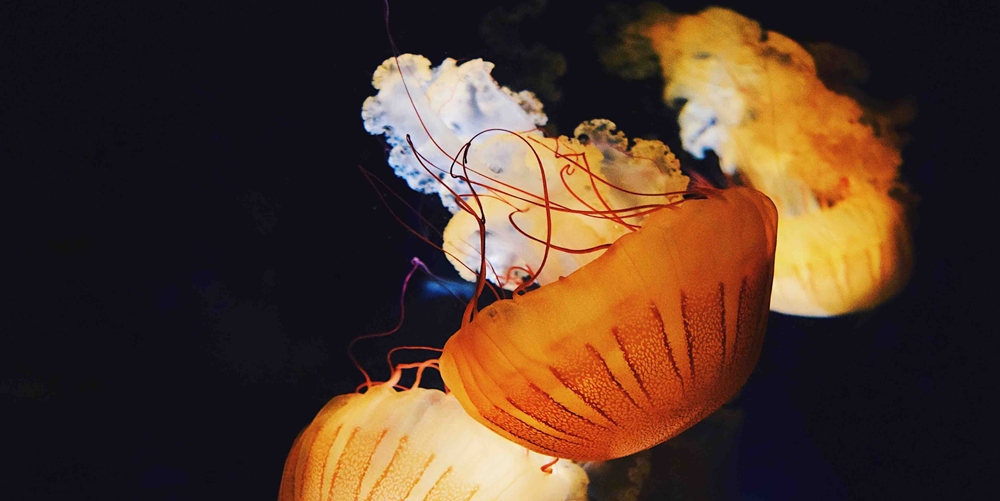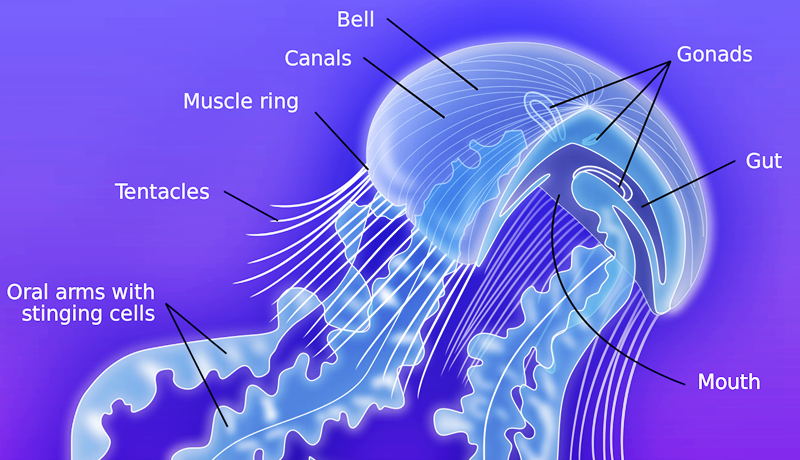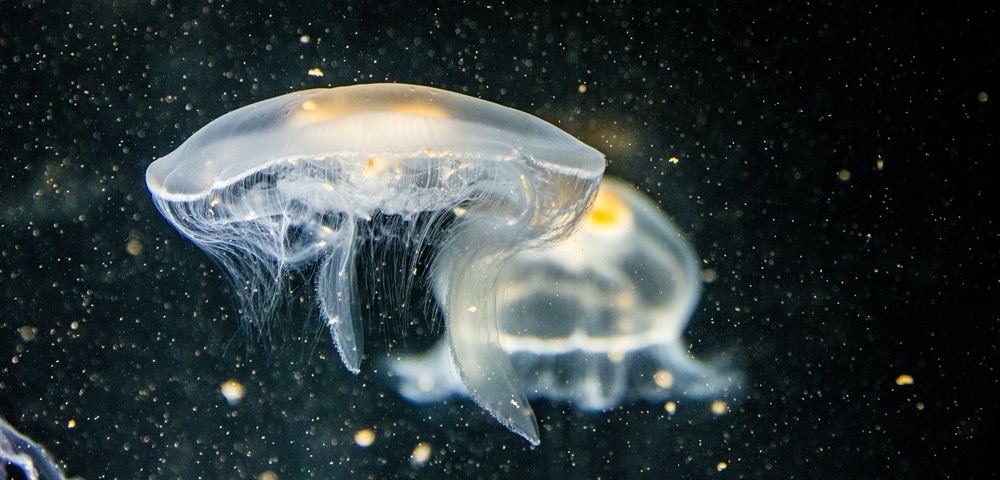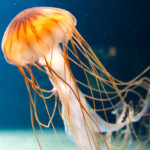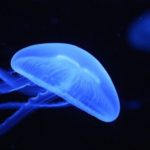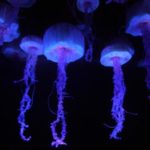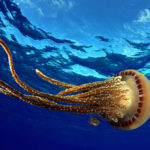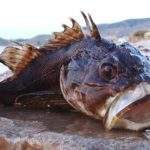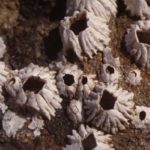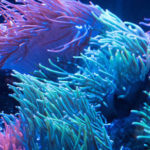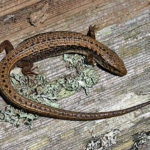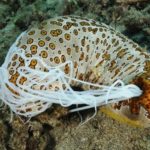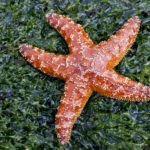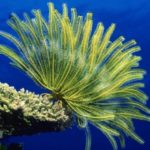What Do Jellyfish Eat? – All About the Diet of Jellyfish
Jellyfishes are one of the most beautiful and wonderful sea creatures. They are opportunistic predators. It means they are ready to eat whatever food they get. The jellyfishes look like harmless and quiet type creatures but they are also one of the most dangerous creatures in the world. Here we are to discuss what do jellyfish eat? Thus because they have tentacles that have the deadliest poison in them which is extremely harmful to humans. Also, the diet of the jellyfish depends on their age and size.
That is the jellyfish eat the prey depending on their shape and size. Some of the jellyfish may eat small and tiny fishes but most of them eat large fishes and eggs of the other fishes. They use their tentacles for hunting prey.
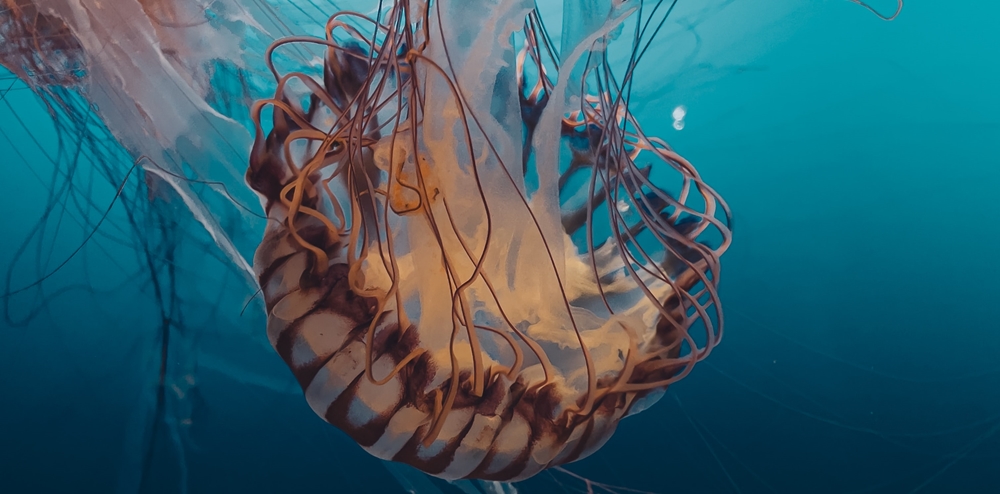
All the jellyfish are carnivorous type. They don’t eat plants only they have an aim to eat meat. They love to eat small and large fish depending on their size. The important thing here is jellyfish will also try to swallow the other baby jellyfish if it believes that it can eat the baby jellyfish.
Table of Contents
- How Do Jellyfish Eat?
- List of animals that jellyfish feed on
- What Do Baby JellyFish Eat?
- Do jellyfish have teeth?
- Can jellyfish eat?
- What animals eat jellyfish?
- How do they move?
- Can Jellyfish be kept in aquariums?
- Little known facts about jellyfish
How Do Jellyfish Eat?
By this time you might have a question that how do jellyfish eat? They have a small mouth opening in their body through which they stuff their food inside the body. You could clearly see the movement of the food particles inside the body of the jellyfish if the jellyfish is of the transparent type. They also eat plankton and other small floating animals. They use their tentacles mainly to eat. This Is how jellyfish eat.
List of animals that jellyfish feed on
Jellyfish are generally carnivorous(predators) and they eat everything they can. The list of animals that jellyfish eat is huge, so let’s take a look at the list of the top 6 animals that jellyfish eat:
- larvae
- zooplankton
- brine shrimp
- smaller fish
- crustaceans
- mollusks
- jellyfish
Also, Jellyfish eat small plants(phytoplankton) and fish eggs. The main thing in the jellyfish diet is that the food must fit into the jellyfish’s mouth, everything else is not important.
What Do Baby JellyFish Eat?
Before you buy the jellyfish from an aquarium make sure that the jellyfish is already healthy. Most of the aquariums feed their baby jellyfish with Brine shrimp which is a sea animal and it is very useful in feeding the baby jellyfish.
Before you bring the jellyfish home just plan whether you are going to continue the previous diet or try something else. Very small newborn fishes may also act as food to the jellyfishes.
My best opinion:
Brine Shrimp are the best food to feed the pet jellyfish as well as the adult jellyfish. You could easily buy the brine shrimp easily even in the online store. Really jellyfishes are cute and simple creatures to grow in our home aquarium.
Whether you are considering adding these alien-looking creatures to your home aquarium or just are curious about them in general, eventually questions such as “what do jellyfish eat?” will come up. With their unusual, transparent appearance and their lackadaisical behavior, one might even question the fact that they are live beings, much less that they might eat any type of food. There are many fun facts about this creature that many will enjoy discovering.
Do jellyfish have teeth?
Jellyfish, regardless of their size, have no teeth. But do not forget that all jellyfish are predators and quite dangerous. The main weapons of jellyfish are tentacles and poison. The tentacles of jellyfish can be called claws, but the poison is teeth, so you shouldn’t get too close to them, even though the jellyfish themselves won’t attack a person, they can “fend up” for themselves at the moment of danger.
Jellyfish are fed by immobilizing the victim with toxins produced by stinging cells, then the “food object” is placed through the mouth opening into the stomach, where everything is digested under the action of digestive enzymes.
It is logical that jellyfish food should be no larger than its mouth because it cannot swallow the prey.
Of course, there are large jellyfish, such as the Arctic Cyanea, whose dome size can reach 2.5 meters, but … it feeds only on small fish.
Can jellyfish eat?
Like any living creature, jellyfish must-have nutrition in order to survive so yes, they do eat. Though they do not have a digestive system, they do have a gastrointestinal cavity which is where all food enters and exits the body. Long, ribbon-like tentacles extend from the outer rim of the umbrella; it is these tentacles that are used to capture food. The nourishment is then pulled toward the mouth opening and into the gastrointestinal cavity. The food begins to be broken down in the cavity, with digestion completed in the gastro-dermal cells. The nutrients in the food are then distributed to the rest of the body. The extraneous matter is ejected through the anus; an opening that is shared by the mouth.
A typical meal for a jellyfish might include small fish, crustaceans, zooplankton, eggs and larvae of other marine life, and even other jellyfish. In truth, whatever the tentacles are able to ensnare from the ever-moving ocean currents are considered as food although it may not be nutritious. Thousands of venomous cells called cnidocytes are highly sensitive line each tentacle. These cells contain poison of varying degrees of toxicity, depending upon the species of jellyfish. At the slightest contact with potential prey, these cnidocytes are alerted. Nematocysts, or stinging cells, are shot out and attached to the prey. The venom contained in the stinging cell is released, stunning and sometimes even killing the hapless prey so it can be drawn into the digestive tract.
People who accidentally come into contact with jellyfish by swimming or walking in waters inhabited by the creature are also prone to be stung by them. Since their transparent nature makes them difficult if not impossible to be seen in the water, encountering the tentacles is quite easy. They are unable to determine humans from a possible food source and release the stinging cells as soon as touched. Some species are deadly while others are not toxic to humans although the stings are very painful.
What animals eat jellyfish?
Jellyfish are in no way suitable for underwater inhabitants as a healthy snack. Do you know why? Because they do not contain any fats, proteins, or carbohydrates. They consist of water and are non-caloric. But this does not prevent other underwater inhabitants from including them in their diet(article about another underwater creature – Blobfish Underwater). So let’s check the list of the animals that eat jellyfish:
- Sea Turtles
- Ocean Sunfish
- Shark
- Tuna
- Swordfish
- Penguin
- Jellyfish
- Octopus
- and other sea creatures
Some types of fish, crustaceans, sea anemones, turtles, and even corals feed on jellyfish. Even octopuses eat jellyfish. First of all, jellyfish are considered easy prey and that is why many types of sea creatures feed on them. Sharks are also not averse to eating them, especially tiger sharks.
A lot of people are interested in this question – Does squid eat jellyfish? Well, it is difficult to unequivocally answer this question, since squids are omnivores. But studies have shown that they don’t eat jellyfish.
As you already understood, jellyfish have many enemies in their natural environment. But we must add to this the fact that man is also one of the many enemies of jellyfish. People eat jellyfish. Jellyfish are considered a delicacy, especially in Japan and China.
How do they move?
There are numerous varieties of jellyfish that display diverse characteristics. Some are very small while at least one species, the Arctic Lion’s Mane jelly, is known to have an umbrella diameter of up to 8 feet and at least 200 foot long tentacles. Certain types of the many varieties move by means of jet propulsion, but many make no concerted effort to move on their own but rather allow the current of the water to carry them.
As diverse as the types and sizes of the jellyfish are the difference in their habitats. Some species are found in warm, tropical waters while others thrive in the icy depths of Arctic oceans.
Can Jellyfish be kept in aquariums?
Although keeping these marine creatures in aquariums is difficult, it is not impossible. They are often a main source of fascination among visitors at professional marine aquariums. Though they are largely invisible in their natural habitat, they can be beautiful exhibits of color and design when placed in glass containers with blue backgrounds. They are almost always displayed in cylindrical containers because jellyfish can easily become fatally trapped in corners. Water flow must extend from the bottom of the aquarium to supply lift. The temperature of the water must be tempered according to the type of jellyfish. Any enthusiast that wishes to keep them in a home aquarium must ask questions such as what do jellyfish eat, is there special care needed for the creatures, and what special equipment is needed?
When wishing to keep them in a home aquarium, asking questions like what do jellyfish eat and how should they be cared for is crucial to the survival of these fascinating creatures. Learning fun facts such as these helps individuals to better understand these marine creatures.
If you have any queries just mail us. Thanks for visiting our blog to know what do jellyfish eat.
Little known facts about jellyfish
One of the most startling facts about this marine species (which are also known as Medusa) is that they are not fish at all. Rather, they are members of the invertebrate genus. Unlike most living creatures, they have no brain and no heart. This may be difficult to imagine of a living creature but the Medusa has no need of such organs. They do possess a network of nerves located in the outer layer of skin called the epidermis, which allows them to feel the touch of other creatures. These transparent beings also have no circulatory, respiratory or digestive system. They are able to breathe by means of oxygenation through a process called diffusion. There is not a single bone in the body of a jellyfish, either, which explains its ability to float effortlessly and gracefully in the ocean’s currents.
Evidence points to the existence of these mysterious creatures going back over 600 million years, a history that far exceeds that of dinosaurs.
The term “jellyfish” comes from the gelatinous material that makes up the umbrella portion of the body. This goo is covered by a thin skin. The remainder of the body consists of about 95% water encased between the epidermis and the gastrodermis.
